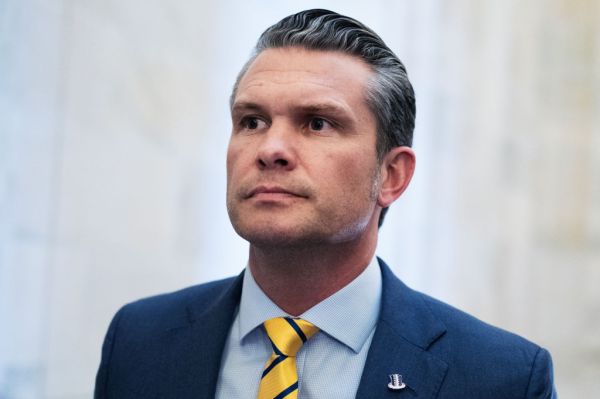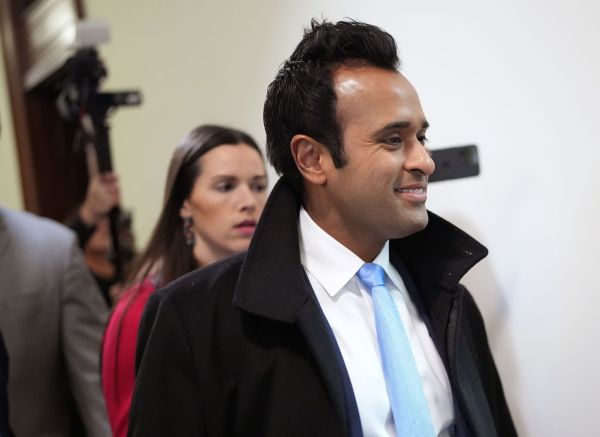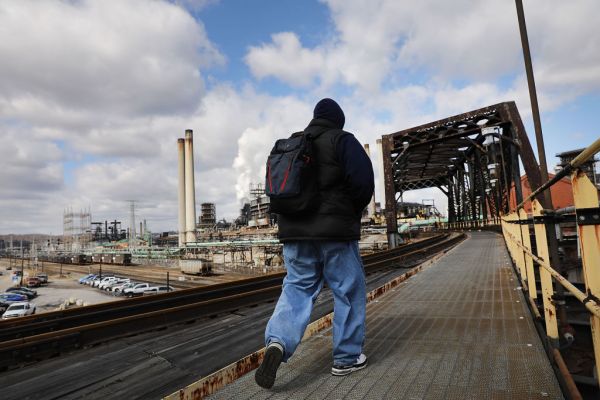In his recent State of the Union address, President Joe Biden praised Ukrainians for their bravery during Russia’s invasion and called on Congress to “rise if you are able and show that, yes, we the United States of America stand with the Ukrainian people.” But when laying out his priorities for the coming year, there was a notable absence of one thing that would help us do so: any call for sustained, healthy defense spending. Meanwhile, one accomplishment he did tout—preventing government shutdowns—is damaging our military coming so unnecessarily late.
Congress failed to pass a budget until just last week—about halfway through the fiscal year—despite “one party” control of the Hill and White House. When Congress does not do its job and instead relies on continuing resolutions to keep the government from shutting down, it forces the feds to operate under a spending freeze; in this case, at Trump-era levels. This spending lock does unique harm to the military because it buys more goods and services a year than all other agencies combined. Funds are misaligned, priorities get scrapped, and the shipbuilding and aerospace industrial base cannot plan, hire and build efficiently.
Thankfully, even though late, Congress largely ignored the Biden defense budget and added significant funds above the White House’s request. While a win to be sure, now the problem is that the $29 billion increase in defense spending above the president’s proposed levels to better compete with China will surely be consumed by red-hot inflation. This is on top of the challenge of the money coming so late, making it a challenge to spend it well on items like capital assets and investments. Any unspent funds will be lost and sent back to the Treasury when the fiscal year ends in late September.
Because of all the delays in the budget, the armed forces have been self-deterring, or cutting equipment and readiness priorities in the expectation of more budget gridlock in D.C. and a topline next year that does not keep pace with price increases on everything from fuel to health care.
With an overall budget that will very likely fail to keep up with overall inflation at or above 7 percent, the Defense Department will struggle to even meet the federally mandated 4.6 percent pay raise for 1.4 million active duty troops and roughly 800,000 civilian employees.
The Pentagon is losing between $4 and 6 billion a month when accounting for the loss of spending increase Congress provided this year in the absence of appropriations and record inflation. Unplanned price increases of roughly $50 billion above previous Pentagon estimates dwarf the generous plus-up from Capitol Hill.
Inflation makes the military poorer overnight. Price increases are affecting military commodities like steel for weapons and building materials for base upgrades, fuel and electricity, and general maintenance and parts for equipment. Base operations are often contracted out, spanning thousands of locations and facilities. Similarly, military construction has seen a triple whammy of price hikes due to lingering national supply chain challenges, labor shortages affecting many industries, contracting uncertainties, and now inflation.
Inflation combined with spending freezes causes reduced buying power for the military that is roughly the same as the sequestration that occurred in 2013, which destroyed military readiness and took the Pentagon over a half-decade to recover from. In some cases, the armed forces are still digging out from the deep and avoidable readiness hole.
Still worse, the Army is already bracing for more budget cuts, and all of the services are struggling in balancing readiness and modernization. These downward pressures on the topline come as the top Pentagon civilians lament that there’s “nothing but minnows left in the pond” to cut, cancel or delay in military modernization after a decade of Budget Control Act spending caps and sequestration.
During an AEI event on March 3, House Armed Services Committee Chairman Adam Smith (D-Washington) stressed that just to keep pace with inflation, the 2023 defense budget would need to climb above $800 billion. So far, that is not what the White House is rumored to be considering. Far less, actually.
All of these consequences are manageable if Washington decides to act. Federal agencies can and should get budgets that match and exceed, if needed, inflation—such as the US military. There is no need for half-year spending freezes when Congress has gone on record repeatedly voting to increase defense above the president’s request through the defense policy bill for 2022.
According to Defense Department Comptroller Michael McCord, “If we take this competition seriously [with China and Russia]… then we cannot afford to continue [to operate on] these lengthy [continuing resolutions].”
The Russian invasion of Ukraine has further exposed the problems posed by an inadequate defense budget. As the pivot to Asia necessitates more funding, many lawmakers and experts seemed comfortable with accepting risk in other theaters and across other capabilities deemed irrelevant to competition with China. Russia’s actions over the past few weeks have called into question the wisdom of such acceptance.
If the U.S. military is to deter China and Russia simultaneously, all while continuing other essential missions, it needs predictable, flexible, robust budgets to execute. Enacting defense bills on time, and at needed levels, are small first steps toward setting a better pace to compete globally.
Mackenzie Eaglen is a senior fellow at the American Enterprise Institute, where she works on defense strategy, defense budgets, and military readiness.








Please note that we at The Dispatch hold ourselves, our work, and our commenters to a higher standard than other places on the internet. We welcome comments that foster genuine debate or discussion—including comments critical of us or our work—but responses that include ad hominem attacks on fellow Dispatch members or are intended to stoke fear and anger may be moderated.
You are currently using a limited time guest pass and do not have access to commenting. Consider subscribing to join the conversation.
With your membership, you only have the ability to comment on The Morning Dispatch articles. Consider upgrading to join the conversation everywhere.